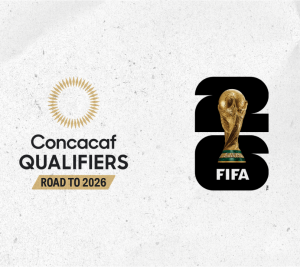By Kara Sherrer
The FIFA Men’s World Cup is the most popular sporting event in the world. A record high of 3.572 billion people — almost half the global population — watched the 2018 World Cup. And, while the Men’s World Cup is supposed to pit the best soccer teams in the world against each other on a fair playing field, the selection and draw processes used throughout the years left some teams with a higher chance of advancing to the quarterfinal.
To empirically assess this phenomenon, Michael Lapré, Associate Professor of Operations Management at Vanderbilt Business, studied tournament data from 1954 through 2022 to determine whether the different seeding systems affect competitive imbalance at the Men’s World Cup. The resulting paper, “The evolution of seeding systems and the impact of imbalanced groups in FIFA Men’s World Cup tournaments 1954–2022,” co-authored by Elizabeth M. Palazzolo (BA’22), was published in the Journal of Quantitative Analysis in Sports.
What is the history of seeding systems at the World Cup?

Image from the Concacaf FIFA World Cup 2026™ qualifiers press release
There are 6 continental FIFA confederations based on geography: North and Central America (CONCACAF), South America (CONMEBOL), Europe (UEFA), Africa (CAF), Asia (AFC), and Oceania (OFC). FIFA caps the number of teams from each confederation that will advance to the World Cup tournament every 4 years.
Since some confederations (such as Europe) have many more highly ranked teams than others, this sometimes results in highly ranked teams from stronger confederations not qualifying. Meanwhile, lower-ranked teams from weaker confederations are given a spot in the World Cup. In other words, spots are partially given according to geography, not necessarily to the strongest teams in the world overall.
Once teams make it to the tournament, they compete in 2 stages: the group stage and the knockout stage. In the initial group stage, teams are sorted into groups of 4. To create groups, FIFA places teams in “pots.” Pot 1 consists of the seeded teams: the host country and the strongest teams. Pots 2, 3, and 4 are based on geography or team strength. Each group is created by drawing one team from each pot. The seeding systems were designed so the host country and the strongest teams could not play each other in the initial group stage, exacerbating the competitive imbalance.
What seeding systems has the FIFA Men’s World Cup used?
The FIFA Men’s World Cup has used 5 different seeding systems throughout its 92-year history.
- 1930–1974: Decision made in closed session
- 1978–1986: In public session, seeding and draw considered the geographical position of the countries represented
- 1990–1994: Use ranking of the last 2 (1990) or 3 (1994) World Cups
- 1998–2006: Use both performances in the last 3 (1998–2002) or 2 (2006) World Cups and FIFA ranking over the past 3 years
- 2010-2022: Use FIFA ranking from 8 months before the World Cup
“For a fair tournament, it is imperative that groups are of similar strength. If one group has much stronger teams than another, it will be much harder to advance from the stronger group compared to the weaker group,” Lapré explained.
Research method and findings

Michael Lapré, Associate Professor of Operations Management
To empirically assess competitive imbalance between groups for the 18 World Cup tournaments held between 1954 and 2022, Lapré and Palazzolo used Elo ratings. Elo ratings are a rating system that considers soccer-specific variables such as the margin of victory and home-field advantage. They did not use the first World Cups in the data set because they were either knockout-stage only (1934 and 1938) or had some groups with fewer than 4 teams (1930 and 1950).
Lapré and Palazzolo averaged the Elo ratings of a team’s opponents in the group stage to calculate their group opponents rating. They found that in every World Cup, the range in group opponents rating exceeds 118 Elo rating points, which is the difference between an average participant and an average semifinalist.
The researchers then used logistic regression to show that for an average participant in a 32-team World Cup, an increase in group opponents rating of only 88 Elo rating points can reduce the probability of reaching the quarterfinal from 0.174 to 0.081, for a decrease of more than half. Furthermore, the analysis showed that none of the 5 seeding systems used by FIFA during 1954–2022 lessened the negative impact of group opponents rating on the probability of reaching the quarterfinal.
Results and implications
Based on their research, Lapré and Palazzolo conclude the paper by offering 7 recommendations to make the Men’s World Cup more competitive and fair.
How could FIFA make the Men’s World Cup more competitive and fair?
- Use recent performance to assess team strength
- Use a rating method such as an Elo rating system to steer clear of the flaws inherent to FIFA’s earlier ranking methods
- Build pots based on team strength instead of continents
- Adopt a draw procedure developed to create balance
- Do not make the host a seed by default
- Allocate confederation slots more closely aligned with the distribution of the best teams in the world
- Do not perform the draw until all participating teams are known

Image from FIFA.com
The Men’s World Cup has made some progress on these fronts in recent years. FIFA has started using recent performances to assess team strength, pots based on team strength, and a more balanced draw procedure. In 2022, it also finally adopted an Elo rating system, although the predictive capacity could be improved. There is also room for improvement for future tournaments, which will help to enhance competitive balance even further and result in closer matches throughout the tournament.
“By making a low-ranked host country (such as Qatar ranked 51 in 2022) a seed and by having an allocation of confederation slots that does not reflect the distribution of the best teams in the world, the World Cup will remain imbalanced,” Lapré said. “Therefore, FIFA should consider not making the host a seed by default. FIFA should also allocate confederation slots more closely aligned with the distribution of the best teams in the world.”
Lapré and Palazzolo also recently studied how FIFA could make the Women’s World Cup more competitive using data since the inception of the Women’s World Cup. Read more on their recommendations here.